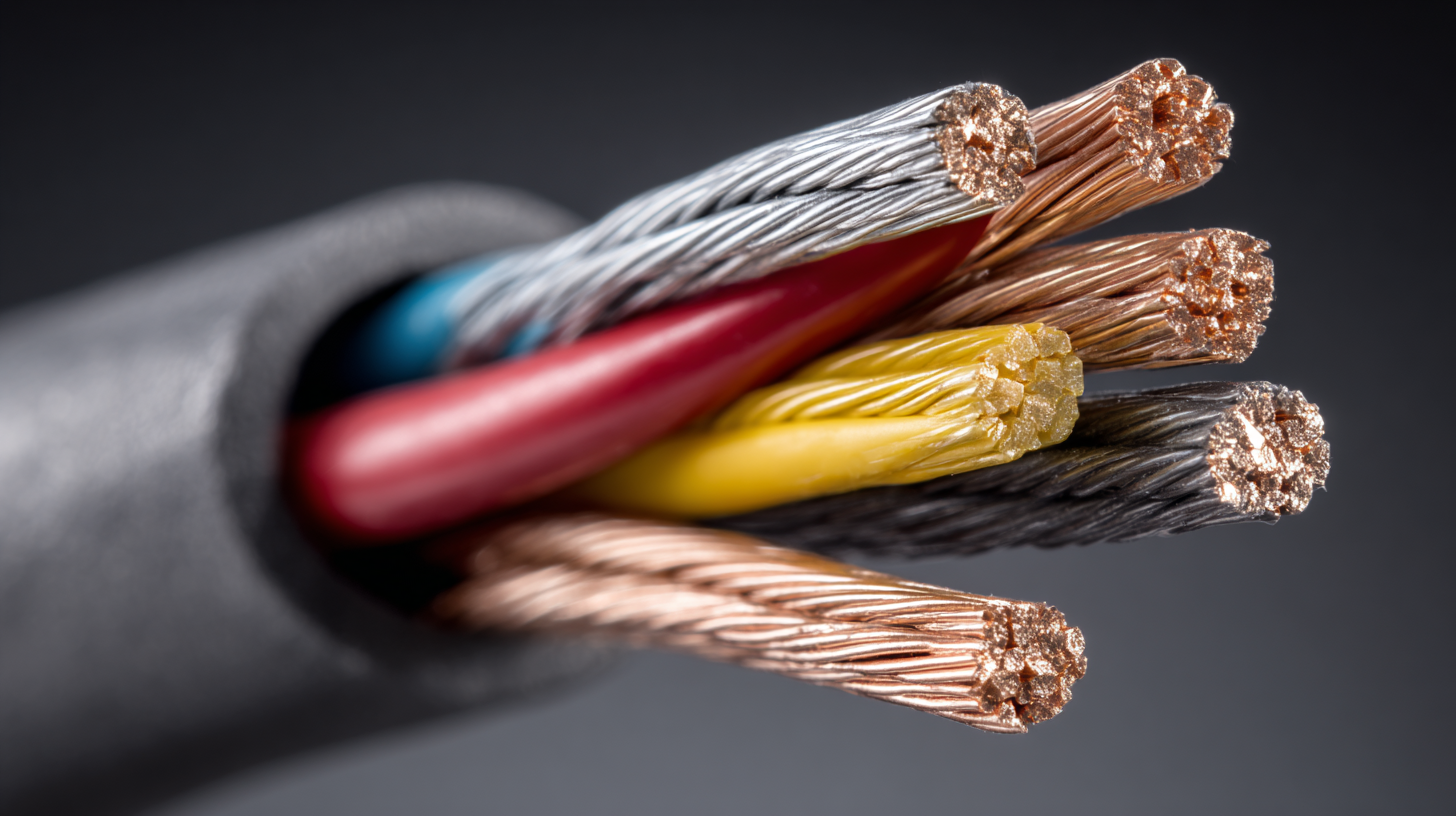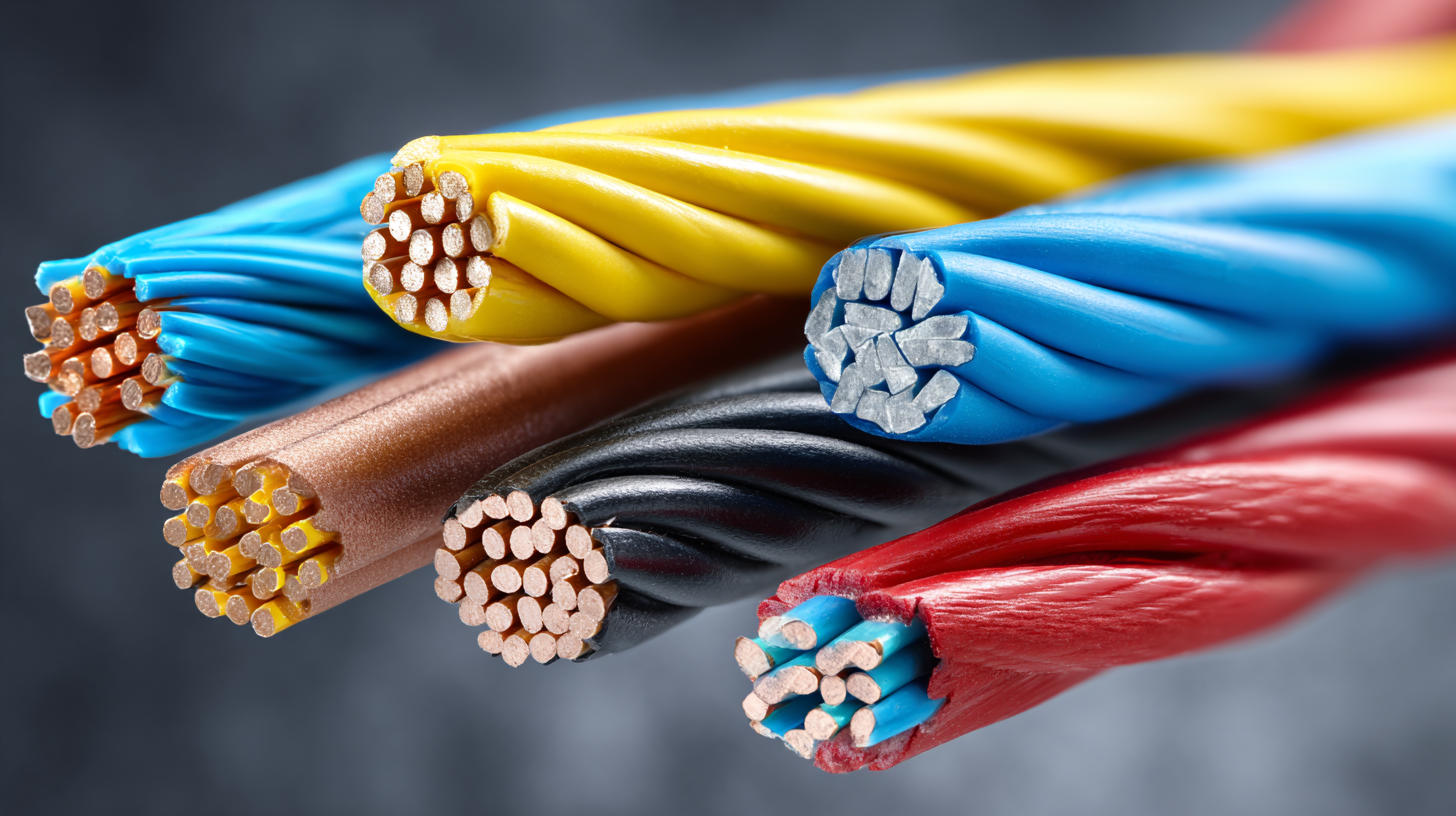Understanding Multi Conductor Cables: Essential Tips for Effective Electrical Wiring
In today's fast-paced electrical and telecommunications industries, understanding the nuances of multi conductor cables is paramount for ensuring effective electrical wiring and optimal system performance. According to a report by MarketsandMarkets, the global market for multi conductor cables is projected to reach USD 22.1 billion by 2025, reflecting the increasing demand for sophisticated electrical solutions in commercial, industrial, and residential applications. These cables, comprising several conductors bundled together, provide significant advantages such as enhanced flexibility, minimized installation time, and improved spatial efficiency. Additionally, the growing trend toward automation and smart technology integration is further driving the need for reliable and high-performing multi conductor cables. As such, mastering the essentials of these cables not only contributes to safer wiring practices but also fosters greater innovation in electrical design and implementation, making it a critical area of knowledge for professionals in the field.

Types of Multi Conductor Cables and Their Applications
When it comes to electrical wiring, understanding the types of multi conductor cables and their applications is crucial. Multi conductor cables are widely used across various fields including telecommunications, industrial automation, and power distribution. These cables typically consist of multiple conductive wires bundled together, allowing for efficient signal transmission and power delivery. Common types include shielded and unshielded twisted pairs, which are suitable for different applications based on their insulation properties and shielding effectiveness.
Here are a few essential tips for choosing the right multi conductor cables:
Firstly, assess the specific requirements of your project. Consider factors such as voltage, current rating, and environmental conditions to ensure optimal performance.
Secondly, pay attention to the cable's insulation material and shielding, as these features can significantly impact the integrity of your electrical system, particularly in areas with high electromagnetic interference.
Lastly, always consult manufacturer specifications and standards to ensure compliance and safety in your electrical installations. By following these tips, you can enhance the reliability and efficiency of your wiring systems.
Key Characteristics of Multi Conductor Cables Explained
Multi conductor cables play a vital role in modern electrical wiring, with their unique characteristics making them suitable for a variety of applications. Understanding these characteristics is crucial for ensuring effective and safe installations. One key feature of multi conductor cables is their versatility, allowing them to carry multiple electrical signals simultaneously. This is particularly beneficial in settings where space is limited but multiple functionalities are needed, such as in complex machinery or sophisticated electronic systems.
Another important aspect to consider is the construction of multi conductor cables, which typically consists of a bundle of insulated wires encased in a protective jacket. This not only enhances the durability of the cables but also provides excellent resistance to environmental factors, such as moisture and chemicals. Additionally, advancements in cable design and technology, as seen in recent updates to construction management software, allow for improved management of circuit wiring requirements, enabling professionals to define cable configurations more effectively. This progression underscores the importance of staying updated on industry developments to maximize the performance and reliability of multi conductor cables in various applications.
Benefits of Using Multi Conductor Cables in Electrical Systems
 Multi conductor cables have become a cornerstone in modern electrical systems due to their numerous benefits. One of the primary advantages is the reduction of space and installation time. According to a report by the National Electrical Manufacturers Association (NEMA), the use of multi conductor cables can potentially decrease the wiring footprint in complex installations by up to 30%, which is significant in commercial or industrial spaces where efficient use of square footage is paramount.
Multi conductor cables have become a cornerstone in modern electrical systems due to their numerous benefits. One of the primary advantages is the reduction of space and installation time. According to a report by the National Electrical Manufacturers Association (NEMA), the use of multi conductor cables can potentially decrease the wiring footprint in complex installations by up to 30%, which is significant in commercial or industrial spaces where efficient use of square footage is paramount.
Moreover, multi conductor cables enhance system reliability and efficiency. By consolidating multiple conductors into a single cable, the potential for connection errors is reduced, which can lead to fewer malfunctions and maintenance requirements. The IECA (International Electrical and Communication Association) highlights that installations using multi conductor cables experience a 25% reduction in electrical interference, supporting cleaner signals in communication systems. This improved signal integrity not only boosts performance but also extends the lifespan of the equipment connected to these cables, resulting in long-term cost savings.
Common Installation Practices for Multi Conductor Wiring
When dealing with multi conductor wiring, it's essential to follow common installation practices to ensure safety and efficiency. One crucial practice is to correctly identify each conductor and its purpose before installation. This can prevent wiring errors that might lead to malfunction or safety hazards. Labeling conductors clearly helps in maintaining organization and makes troubleshooting easier if issues arise later.

Another important tip is to avoid excessive bending of the cables during installation. Sharp bends can damage the conductors inside and lead to performance problems. Instead, use gentle curves and proper cable management tools to maintain the integrity of the wiring. Additionally, ensure that the installation area is free of moisture and contaminants, as these can compromise the cable insulation and affect overall performance.
Lastly, it is vital to secure the conduits appropriately and maintain them at a safe distance from sources of heat and electromagnetic interference. Proper fastening prevents physical damage and reduces the risk of electrical interference. Following these practices will help create a reliable and safe electrical system.
Maintenance Tips for Longevity of Multi Conductor Cables
When it comes to maintaining multi conductor cables, understanding the specific care requirements is crucial for ensuring longevity and optimal performance. According to a report by the International Electrotechnical Commission (IEC), improper maintenance is responsible for over 30% of cable failures in industrial applications. Regular inspections can help to identify potential issues such as insulation damage, corrosion, or mechanical wear. Utilizing proper cable management techniques, such as avoiding sharp bends and ensuring adequate support, significantly reduces stress on the cables, promoting an extended lifespan.
Additionally, temperature regulation plays a vital role in the longevity of multi conductor cables. The National Fire Protection Association (NFPA) recommends keeping the operating temperature of these cables below their maximum rated limit, as overheating can lead to gradual insulation degradation. Implementing a routine cleaning schedule to remove dust and debris also aids in preventing electrical resistance, which can contribute to overheating. By prioritizing these maintenance strategies, users can enhance the reliability and durability of their multi conductor cables, reducing downtime and ensuring safer operational conditions.


